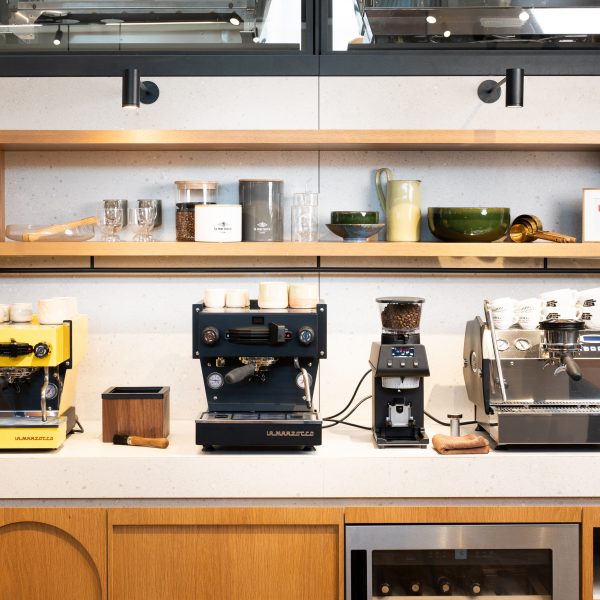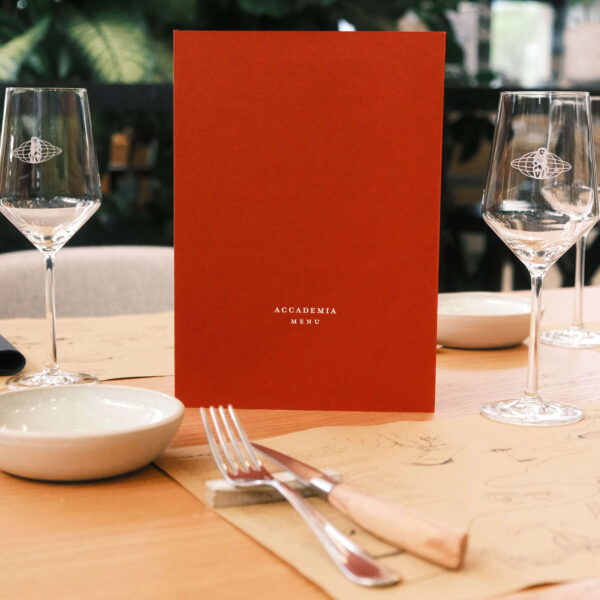Blog
“A coffee with” is a way to learn about life at the old La Marzocco factory by the people who have experienced it.
We took a coffee and chatted with Marco Toscani, now Safety & Maintenance at Accademia del Caffè Espresso. Grandson of Bruno Bambi, late founder of La Marzocco, Marco was raised amongst espresso machines and has been working for the company since 1981.
“I’ve been working at La Marzocco since September 1981. I was done with school and I wasn’t really feeling like keeping studying. I wanted to be independent and I was suggested to go work for La Marzocco. At that time you were learning by doing. I was an apprentice for 2 years, and then I stayed. It will be 42 years next September.
When I first got in, I worked alongside Piero on the drafting table. At that time, Piero’s father – Beppino (Giuseppe Bambi) – came to me and told me: “You should work in every single department!”. I started from the workshop, pressing metal sheets. Then, each process was done internally: the pressing, the painting, the welding,… I moved to the bench-test, then to the final assembly, and eventually, I ended up in the warehouse.
In the electrical department, there was Franco Banzi, and he taught me a lot. The only thing I’ve never tried is the welding. I moved to the bench test, then to the final assembly, and eventually, I ended up in the warehouse. Someone was retiring, and I stepped in. I left the warehouse only a few years ago when I began working at Accademia.
The company was small, and very different from today. In my office, I still have the production sheets of the machines we were producing at the time. We produced 50 machines a month; all the components were unloaded manually.
In the 90s, with the new American partners, La Marzocco began to grow and grow.
I remember very vividly my first day at work. I was assigned to cut and bend metal sheets for bar counters. I was with this other worker, Giovanni Pezzatini. He was showing me what I would have had to do. Suddenly, there was a problem with a water pump out in the woods, and we went down to repair it. All the land surrounding the factory was owned by La Marzocco and we were living in the villa right next door all together: Giuseppe and Bruno with their wives Beppina and Fernanda, and their kids and their partners – Piero and Giovanna, my parents Ettore and Anna with me and my brother. Altogether, we were ten people.
When I was coming back from school, I used to ring at the factory. The doorman would open the door for me and I would reach home from there.
I was pretty much born at La Marzocco. When I was kid, I spent a lot of time at the factory. I grew up here. I used to know all the workers. In the offices, there were really few people: Pina, my father Ettore, Piero.
My father worked here as well. He was an accountant. He was born in Mirandola, near Modena, and there he worked for a company producing bus bodies. When he and my mother got married in 1963, he started working for La Marzocco. He worked here until his retirement. For a certain amount of time, my mum worked here as well. She helped out my father with accounting entry.
Over the years, we’ve experienced also difficult times, when there was not enough work.
Once, we had nothing to do, so we did some maintenance work on the roof. At that time, certain works were done by us. You didn’t need certifications. Now it would be impossible.
Luckily, when Piero started working with Kent, the amount of orders began to grow.
I remember the last furniture set we crafted: Fonte dei Dolci. We delivered it in the night, we loaded the old truck and we drove to the center of Florence. We were a lot of people, almost the whole staff, unloading this counter in Via Nazionale. Giuseppe Bambi was there as well. That was the last counter he worked on. Afterward, the carpentry was closed and a part of the building was sold. Some areas got smaller, like the bar, that used to be down in the Mezzanino.
Where now there is the after-sales office, we had “Technical Service”, the division handling spare parts, while there where we now have the Officine Fratelli Bambi Workshop, there was another company, that was working for us. We bought a bit of their space and moved there the production of the GS3 and the boiler bench-test.
With time, it got more difficult to handle the production process here. The space was always too small. We were doing most of the processes and components ourselves, so we had plenty of raw material and plenty of machineries. We had six lathes and therefore six lathe turners. They produced all the taps, the drain, etc, using a lot of brass and copper. With the growth of the orders and the struggle hiring new workers, the way we worked changed: more suppliers, carts to quicken the production-flow.
Of course, the factory in Pian di San Bartolo (Where Accademia is located now) was huge compared to the previous workshops, but it was still a family-run business. We were 15 people. When the carpentry was shut down, we were left with 10 people. At the peak of the season, we had up to 50 workers.
My grandfather Bruno used to take care of sales, he was always around. Piero’s father Giuseppe was always drawing, designing, but at the end he was mostly taking care of the furniture side of the business, less of the espresso machines. It was Piero who brought forward the design of the GS2. The GS instead was designed by Giuseppe. While Giuseppe decided to focus on machines, Piero kept designing machines and he was right.



